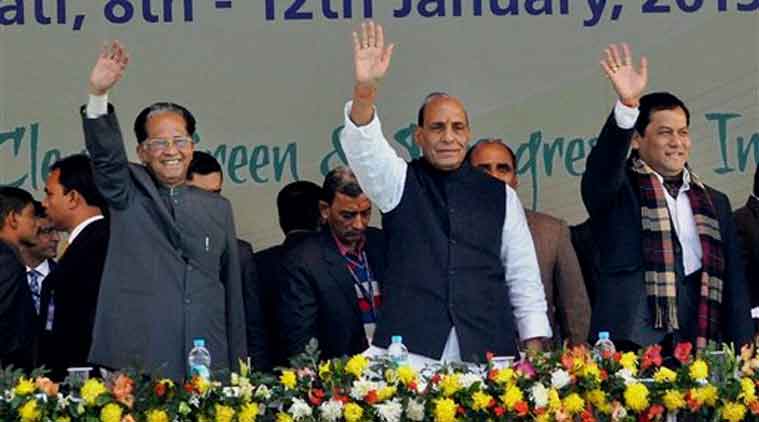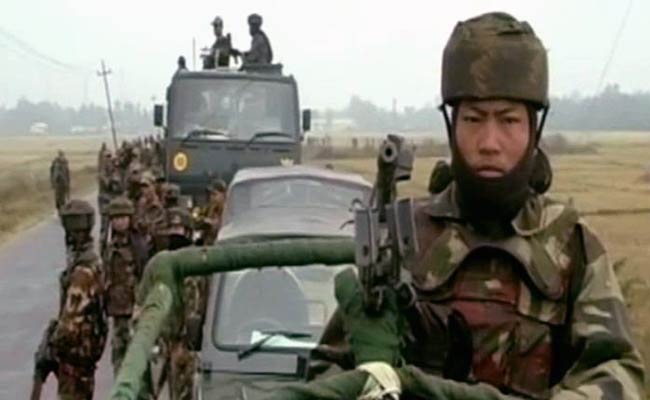| By Rining Lyngdoh |

A mobile tower in a village on the Indo-Bangla border
Officials of the border districts in Bangladesh and Meghalaya took the decision on the concluding day of the first two-day bilateral conference of deputy commissioners/district magistrates of both countries here. Security forces manning the international border are reportedly facing difficulties in curbing criminal activities owing to the active network of Bangladesh mobile service providers along the boundary. District officials from both countries today agreed they would take up the matter with the higher authorities to ask telecom operators to set up jammers along the border to block mobile signals. "The ability of miscreants and militants to communicate with their accomplices on the other side of the border by using Bangladesh SIM cards is a big concern for India," East Khasi Hills deputy commissioner Sanjay Goyal told reporters here. India's concern assumes significance in wake of the spread of terror modules in the northeastern states and West Bengal, which share a long border with Bangladesh. The countries share a 4,096km-long international border, the fifth-longest land border in the world, which includes 262km in Assam, 856km in Tripura, 18km in Mizoram, 443km in Meghalaya and 2,217km in Bengal. Criminals are allegedly using Bangladesh SIM cards from areas close to the border to get in touch with their counterparts in the neighbouring country to avoid coming under the radar of Indian agencies that track cross-border calls. Recently, NIA sleuths probing the Burdwan blast found out that Jamaat-ul-Mujahideen Bangladesh (JMB) operatives in Bengal used to go near the border and use Bangladesh SIM cards to make international calls. By doing so, they avoided routing the calls through networks of Indian service providers. By making calls near the border, they made use of signals from a tower in Bangladesh. "We have requested the deputy commissioners of the Bangladesh districts bordering the districts in Meghalaya to take up this issue with their respective telecom operators to put in place a technology which can restrict the coverage of mobile network along the international borders," Goyal said. He said both sides have mutually agreed to find a solution to the problem so that such technological loophole does not provide an advantage to miscreants or militants along the border. Indian security agencies admitted the miscreants could easily access SIM cards of Bangladesh companies like Grameen Phone along the border. Allegedly, a number of Bangladeshi nationals who managed to enter Indian side could carry out illegal activities by using SIM cards made in the neighbouring country. Indian exporters who deal with Bangladesh allegedly use Grameen Phone SIM cards to keep in touch with Bangladeshi importers when they do not get access from their local mobile phones. Indian telecom officials said owing to the geographical proximity, Bangladeshi cell phone networks could be accessed from areas in India that are close to the border by using SIM cards made in the neighbouring country. The Union telecom ministry had earlier entrusted the department to take steps to extend cellular services to all villages along the Indo-Bangla border so that people on the India side could connect with their relatives in Bangladesh. The department said the connection package includes laying of fibre optics and supplementing the services with optical rings and use of power grid networks and satellite media. Northeast MPs had also raised concern over the availability of mobile signals from Bangladesh in absence of Indian telecom service providers along the border. The MPs had pointed out that the frequent use of Bangladesh service providers by militant groups inside India, which poses a major security threat. In the past, Indian security forces had seized a number of Grameen Phone SIM cards from arrested militants. |








 Home Minister Rajnath Singh, Assam Chief Minister Tarun Gogoi and Union
Sports Minister Sarbananda Sonowal wave at the crowd during the closing
ceremony of the 19th National Youth Festival in Guwahati on Monday.
Home Minister Rajnath Singh, Assam Chief Minister Tarun Gogoi and Union
Sports Minister Sarbananda Sonowal wave at the crowd during the closing
ceremony of the 19th National Youth Festival in Guwahati on Monday.



